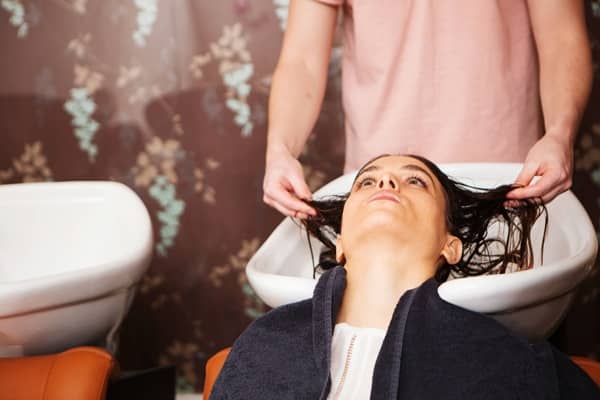Hair colouring has long evolved from a one-size-fits-all process into an art form that requires precision, knowledge, and care. In leading salons like PIED-DE-POULE, https://p-de-p.co.uk/hairdressing-services/hair-coloring/p-de-p.co.uk/hairdressing-services/hair-coloring clients no longer have to choose between a beautiful shade and the health of their hair. Modern professional dyes allow for vibrant, long-lasting results without causing excessive dryness, breakage, or irritation. But what exactly makes salon-grade colour safe—and why is it so different from the box dye you may find on the shelf?
What professionals look for in hair dyes and how you can enjoy stunning colour transformations without compromising your hair’s integrity.
Ammonia-free vs. low-ammonia: What’s the difference?
One of the first things professional stylists check is whether a product contains ammonia – a traditional component in many hair dyes used to open the hair cuticle for pigment penetration. While ammonia is effective, it can also be harsh, causing dryness and a strong chemical odor.
Many professional lines now use ammonia-free formulas or low-ammonia blends, which are significantly gentler. Instead of ammonia, they may rely on ingredients like MEA (monoethanolamine) that perform a similar function but in a less aggressive way. Salons often opt for these advanced alternatives to ensure the process remains comfortable and safe, even for clients with sensitive scalps.
Oil-based and botanical colour systems
Modern salon colouring systems frequently include oil delivery systems (ODS), which use natural oils to carry the dye molecules into the hair shaft. This technique not only enhances pigment absorption but also protects the hair’s natural moisture barrier.
Some of the best professional colouring lines are enriched with ingredients like:
- Argan oil
- Coconut oil
- Aloe vera
- Shea butter
- Avocado oil
These components condition the hair during the colouring process, leaving it softer, shinier, and healthier-looking post-treatment.
The role of keratin and protein-enriched colour formulas
Hair is primarily composed of keratin, a protein that gives it structure and resilience. Bleaching and repeated colouring can deplete keratin levels, making hair brittle and prone to damage. Many professional dyes now contain keratin, collagen, or silk proteins to rebuild and strengthen the hair fiber during colouring.
This is especially important for clients who opt for full-head transformations, lightening, or colour corrections. By using a dye that reinforces the hair from within, stylists at high-end salons can achieve bold results without weakening the strands.
pH-balanced and scalp-friendly options
While drugstore dyes can sometimes disrupt the natural pH balance of the scalp and hair, professional products are carefully pH-adjusted to respect the skin barrier and minimise inflammation. This reduces the risk of redness, dryness, or post-colour itching, especially in sensitive clients.
Advanced salon formulas also avoid common irritants such as:
- Parabens
- Resorcinol
- PPD (para-phenylenediamine)
Instead, they rely on dermatologist-tested and hypoallergenic solutions that offer rich colour with minimal reaction.
Toners, glosses, and demi-permanent dyes: gentle choices for shine and tone
Not every client needs a full permanent colour. For subtle enhancements or refreshing dull tones, stylists may recommend toners, glosses, or demi-permanent colour. These products usually contain less hydrogen peroxide, lower pH, and conditioning agents that add shine and richness without changing the hair structure.
Glosses, in particular, are loved for their ability to restore vibrancy and eliminate brassiness while making hair look luminous and polished.
Customised formulas and strand-by-strand application
One of the biggest advantages of colouring your hair in a salon is the customisation. Rather than relying on a universal formula, professional stylists mix colours tailored to your base tone, skin undertone, and hair condition. Application is done strand by strand, ensuring even coverage and minimal product waste.
Post-coulor care : what professionals recommend
Safe colouring doesn’t end when the dye is rinsed out. Professionals understand the importance of aftercare to maintain colour vibrancy and support hair recovery. They often recommend:
- Sulfate-free shampoos and conditioners
- Colour-safe masks with nourishing oils
- Leave-in treatments with UV protection
In salons, you’ll also find specialised treatments like olaplex or bond-repairing masks, which can be added during the colouring service to further reduce any structural damage.
When beauty meets science
Thanks to years of innovation and the growing awareness of hair health, hair colouring no longer has to be a compromise. Whether you’re going platinum blonde, rich brunette, or just adding a few face-framing highlights, the products used by professional stylists are carefully designed to enhance your hair – not harm it.
So if you’re considering a colour change, put your trust in experienced colourists who work with the right tools. With the right dye, the right hands, and the right approach, you’ll enjoy beautiful, damage-free colour – every time.



.jpg?width=1200&auto=webp&quality=75)




